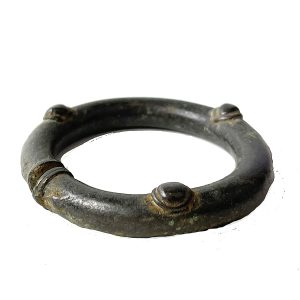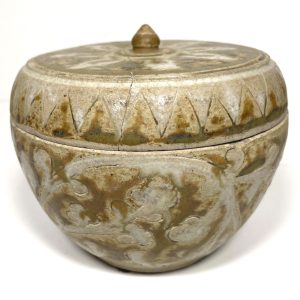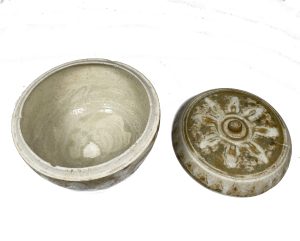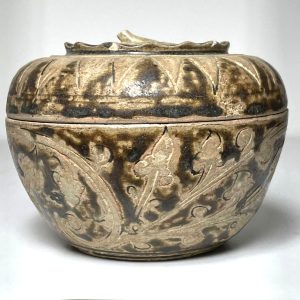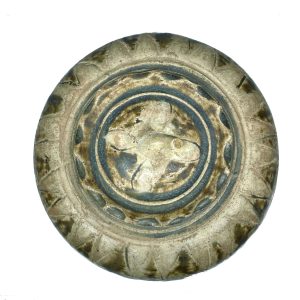-


$395.00
Prehistoric Thai Bronze Age jewelry, adzes and tools have been found all over Thailand. Excavations from various soil levels show many sites had been inhabited for millennia. They confirm the existence of an early, well-developed metallurgical tradition of bronze digging and cutting tools, adzes (ancient axe like tools to cut wood), adult and child’s bronze…
-
Sale!


$295.00 Original price was: $295.00.$215.00Current price is: $215.00.
Ht: 4.25” Dia: 5” | FREE SHIPPING within continental U.S.!
This Sawankhalok glazed stoneware lidded bowl with radiating glazed petals, olive-brown glazed lotus bud handle, intricate scroll of white glazed branches and florals was used to store spices, powders and cosmetics, betel nuts and medicine.
-
Sale!


$385.00 Original price was: $385.00.$325.00Current price is: $325.00.
Ht: 3.375” Dia: 4.625” | FREE SHIPPING within continental U.S.! and beyond
This Sawankhalok glazed stoneware lidded bowl with elegant mangosteen shape, cream and brown glazes and stylized incised floral and geometric designs, and raised calyx was used to store spices, powders and cosmetics, betel nuts and medicine.
End of content
End of content

